When I wrote last year about the Top 6 Games to play with younger kids, I had no idea the amount of response we’d get. This article has been shared countless times on Facebook and Twitter, and among our friend groups. I’ve even had people recommend my own article to me in conversation (that’s pretty awesome in case you were wondering).
But time hasn’t frozen since that article was published and my kids are getting older (no matter how hard I try to prevent it). Not to mention I have 2 older kids whose preferences weren’t really represented in that original piece.

I thought it was time to talk about the games my 9 and 12 year olds have been playing recently. So I asked them, and this is the list they came up with. Unlike the list of games for younger kids, which focused primarily on basic skills like color matching, taking turns, and basic counting, this list of games for older kids are teaching strategy & tactics, reading your opponent, how to laugh with friends & family, and yes…still how to lose with grace. Also unlike the games for younger kids I actually enjoy almost all of these games and would happily play them on request.
Battle Sheep
People say that sheep are dumb, but in Battle Sheep, they’re sneaky, clever, and mean. Send out your flock to control as many areas of the pasture as you can, all while blocking other players from trying to do the same. Can you dominate the grasslands?
In Battle Sheep players send their flock of 16 sheep out the farthest reaches of the pasture in an effort to secure the tastiest grasses for themselves. All the while they’re muscling the opposing sheep out of their area, and blocking them from moving. If this sounds mean, well it is. This is the perfect sort of game for older kids who simply delight in attacking mom and dad, or their brothers and sisters.
Battle Sheep features some of the best artwork: sheep who fart and belch, sheep with smarmy grins and sheep with devil may care attitudes. It also has superb and satisfying tokens, seriously just click those tokens together and you’ll see what I mean. Roll your eyes at the name if you will, but this game will teach your kids tactics, area awareness, and clever moves. Pick it up today!

Read our review of Battle Sheep.
Teaches: Tactics, area awareness, and cleverness. Your kids will need to pay attention to not only their pieces, but every other player on the board. You never know when you’ll get into a situation where someone could block you in without you realizing it.
Parents note: Battle Sheep definitely has the potential for meanness and picking on other players. There’s nothing wrong with playing to win, but remind your kids that always attacking other players won’t guarantee them the game.
Dino Dude Ranch
Dino Dude Ranch is a fun dinosaur themed set collection game which pits players as opposing Dino ranchers. Each rancher is trying to earn the most points by collecting high value critters from the “Jurassic Hunting Grounds”, and complete hidden objective cards.
The light and cartoony dinosaur theme makes this a fun game to look at, but the gameplay makes it enjoyable. On your turn you’ll roll dice which give you resources (like leaves, fish, and meat), and “helping hand” cards (which provide useful special abilities). Trade your resources for dinos from the Hunting Grounds, and leverage the helping hand cards to increase your buying power, take resources from other players, and steal dinos from their ranches.
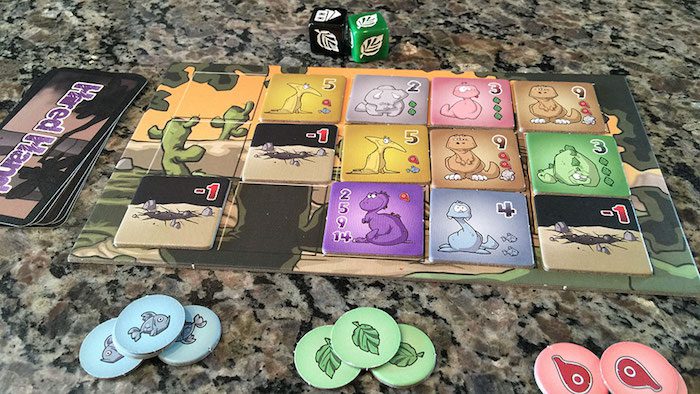
This is one game you should consider putting into a regular family rotation. It’s easy enough for even 6 year olds to play, but engaging for adults as well. The dice add just enough randomness that kids will have a legitimate chance to win without…making allowances. The artwork is fun and inviting, and the theme is just delightful.
Check out our review of Dino Dude Ranch as well as our review of the Dino Dude Ranch: Hatchlings expansion.
Teaches: Dino Dude Ranch teaches kids about set collection, long term planning (saving up resources for dinosaurs they want to purchase), changing plans (what happens if someone gets that dino first), and the nature of randomness (what happens if you don’t roll the resources you want).
Parents note: The helping hand cards are quite useful, but can easily be forgotten. Remind your kids to look at the cards regularly to see when they make the most sense to play.
Santorini
Santorini is an abstract strategy game gussied up in the sumptuous and colorful robes of Greek mythology. In Santorini players are constructing 3-dimensional towers and trying to be the first to move one of their two player pieces to the top of a 3 story building.
Santorini is a stunning attention grabber with brilliant white and vibrant blue pieces. But the gameplay is equally appealing. Each player starts the game with one of 30 “god” cards which provide players with a unique special ability. Santorini is one of those games where each player thinks the other person’s power is better than their own.

The god card powers are broken down into three main categories: alternate movement – which allows players to move in ways that break the rules of the game, specialized win conditions – which provide an additional way to win the game, and removing opposing workers – which allow you to affect the pieces of other players.
Santorini is so simple and fast that you can potentially play 2 or 3 times in a half hour. It’s easy to teach, quick to setup and tear down, and there’s also a bit of what we like to call “Builder’s Satisfaction” because of the 3 dimensional aspect of the game. It’s well worth picking up, and keeping in your family for years to come.
Teaches: Santorini teaches strategy and tactics, as well as spatial management. Because the game is in 3d, players must be aware what’s going on around them on multiple levels.
Parents note: Stick with the set of 10 beginner god cards for the first few games. These cards have abilities which are easy to understand and visualize, and will give your child the best onramp to success in Santorini.
Sparkle*Kitty
In Sparkle*Kitty 3-8 players act as princesses who are trying to rescue themselves from the top of a tall tower.
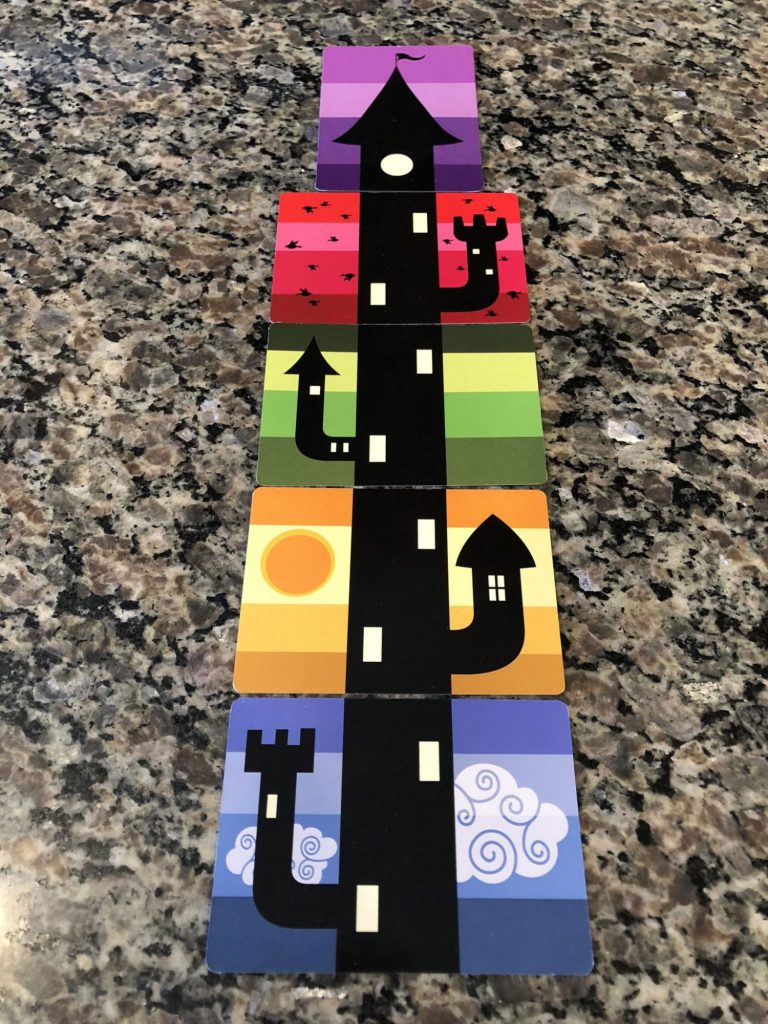
They do this by casting spells which allow them to slowly remove cards from their tower. The cards are double sided with a tower part on one side, and a silly word on the other side: glitter, spooky, ducky, froggy, giggle, baby, overload, vortex, and dozens more. Players cast spells by playing a card from their hand into the shared “spell book” in the center of the play area. The card played must match either a symbol or a color of one of the two cards already visible in the spell book. And then the player must “invoke” the spell by speaking the two visible words in whichever order they like.
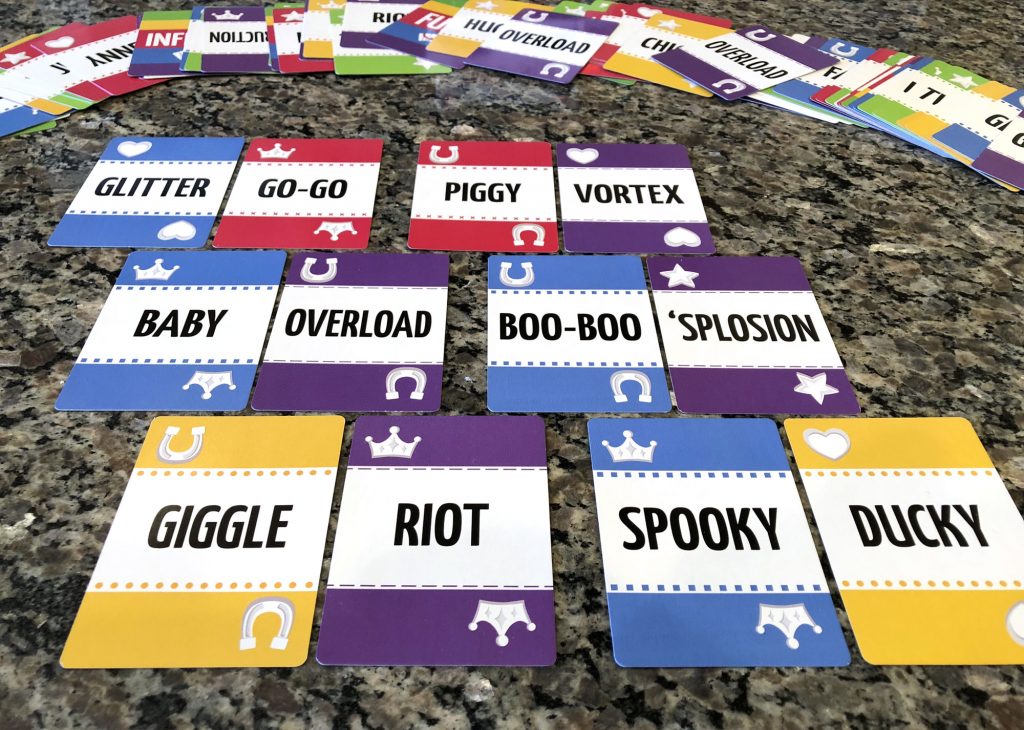
My kids absolutely adore this game because it actively encourages them to be silly. By the end of the game they’re usually making up their own words and riffing on each other’s card play.
Check out our review of Sparkle*Kitty.
Teaches: Sparkle*Kitty teaches kids the value of laughing at themselves. When a player is forced to say a really silly word combination they’ll realize they’re not being laughed at, but with. It also teaches color and symbol matching.
Parents note: The “characters” in this game are all girls; they’re princesses after all. This is a fantastic time to encourage your boys to pick their favorite princess. Sparkle*Kitty is proof that boys can play girl characters and have a blast.
Gravwell

The goal of Gravwell is for players to travel from The Singularity in the center of the spiral movement track to the Warp Gate at the opposite end. The unique thing about Gravwell is the way you progress down this track. Because you’re trying to escape from a gravity dense area, you’re forced to use other higher sources of gravity to move ahead including abandoned ships and even the ships of other players. Players will use cards which pull them towards the nearest source of gravity, or push them away from that source. All players select a card from their hand, and reveal them simultaneously. Each card in the deck of 26 has a letter on it which will also determine the order in which cards are used. So the player who plays the G card will move before the player who selected the M card, and so on.

I like that Gravwell has quite a lot of guesswork and deduction to it. If you need to have a ship in front of you so that you can pull yourself towards that ship and slingshot past it, then you need to make sure you don’t get pulled backwards before you can play your card. If you miscalculate then you’ll wind up heading in the opposite direction which can lead to lots of groans (from you), and laughter (from the other players). Thankfully Gravwell also provides each player with an “emergency stop” card which can be used once per round.
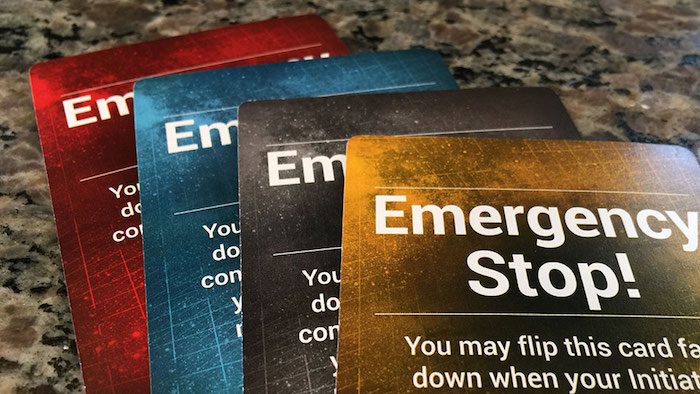
Gravwell hearkens back to traditional single track movement games but with some modern twists. The colors are vivid neon greens, purples, pinks, and blues, with futuristic accents. It’s a dead simple game, playing only a single card on your turn. The cleverness and fun comes in outguessing your opponents and zooming past them to the warp gate with them only spaces behind you.
Check out our review of Gravwell.
Teaches: Strategy and planning. Selecting which of the 6 cards you have in your hand can be tough. While the game is only 2 dimensional, players also need to keep in mind the element of time; which card will be played first due to its letter.
Parents note: The game board displays a card frequency that players can use to see how common some cards are. Remind your child to pay attention to the three different colored cards as they each have a different movement type.
Dropmix
Dropmix is less of a game and more of an experience. Equal parts toy, game, and social experiment, Dropmix allows players to dynamically mix audio clips from popular hits of the past 3 decades into unique, innovative, and totally new mixes that have never been heard before.
Dropmix is an electronic device which connects to your smartphone or tablet and allows players to mix song clips in real time. Players use decks of cards which reference song clips from artists like Salt-n-Pepa, MGMT, Ed Sheeran, Bruno Mars, and far more. Most cards contain only a single instrument: guitars, drums, keyboards, bass, but some cards contain an entire clip.

Dropmix offers a number of different play modes (freestyle, clash, and party mode) and is just a blast to play with. While clash and party are great, you could spend your entire time with this device in freestyle mode, simply mixing and matching songs, changing pitch and tempo, and pretending you’re on stage at Countdown NYE in front of thousands of adoring fans.
Teaches: Listening skills, decision making, color and pattern recognition.
Parents note: This is a wonderful activity to do with your kids. You could easily lose an hour or more of time just going through the cards included in the base game, mixing in guitars, then drums, then vocals from all different genres. As an added bonus Dropmix allows you to save your creations, and even share them.
Honorable Mention
NMBR 9
NMBR 9 is a game all about stacking interestingly shaped tiles displaying numbers. The higher in the stack a number is, the more valuable it is. But watch out because there’s some tricky rules which dictate how, and where, can you place the tiles. NMBR 9 is a clever and fun game which will have your kids wearing their thinking caps the entire time
Teaches: Spatial awareness, pattern matching.
Parents note: NMBR 9 is essentially a solo game. Each player has a complete set of tiles, and all players are placing the same tiles at the same time based on a shared deck of cards. If your child has trouble, consider playing alongside them and building up a tower together.
Looking back at the entries on this list I’m struck by how many of them have spatial aspects to them. Battle Sheep, Santorini, Gravwell, and NMBR 9 all require players to continually monitor their surroundings. Do your kids enjoy the same sorts of games? Did we leave off one of your family favorites? Tell us what we missed and why in the comments, or on social media!











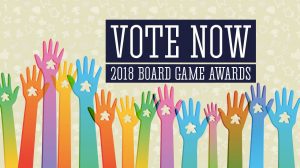




Not a bad list – for kids of that age if they have never been exposed to designer board games.
Great List! Thanks for sharing this. I just came across another one article, give it a reach https://logicroots.com/MathBlog/best-educational-toys-for-kids/
I noticed that DropMix says it’s for ages 16+. Any ideas why that would be the case?
Amy, that’s a great question; I didn’t notice that. I suppose it’s possible that some of the music included could have questionable lyrics? In all the times I’ve played it though I’ve never heard anything that bothered me. I played it with my 5 year old son and never had a problem.
Amy, I never actually noticed that age restriction. I suppose it’s possible some of the sound clips have questionable lyrics, although I’ve never heard anything. I’ve routinely played this with my 7 year old (who was 5 at the time) and he does just fine.